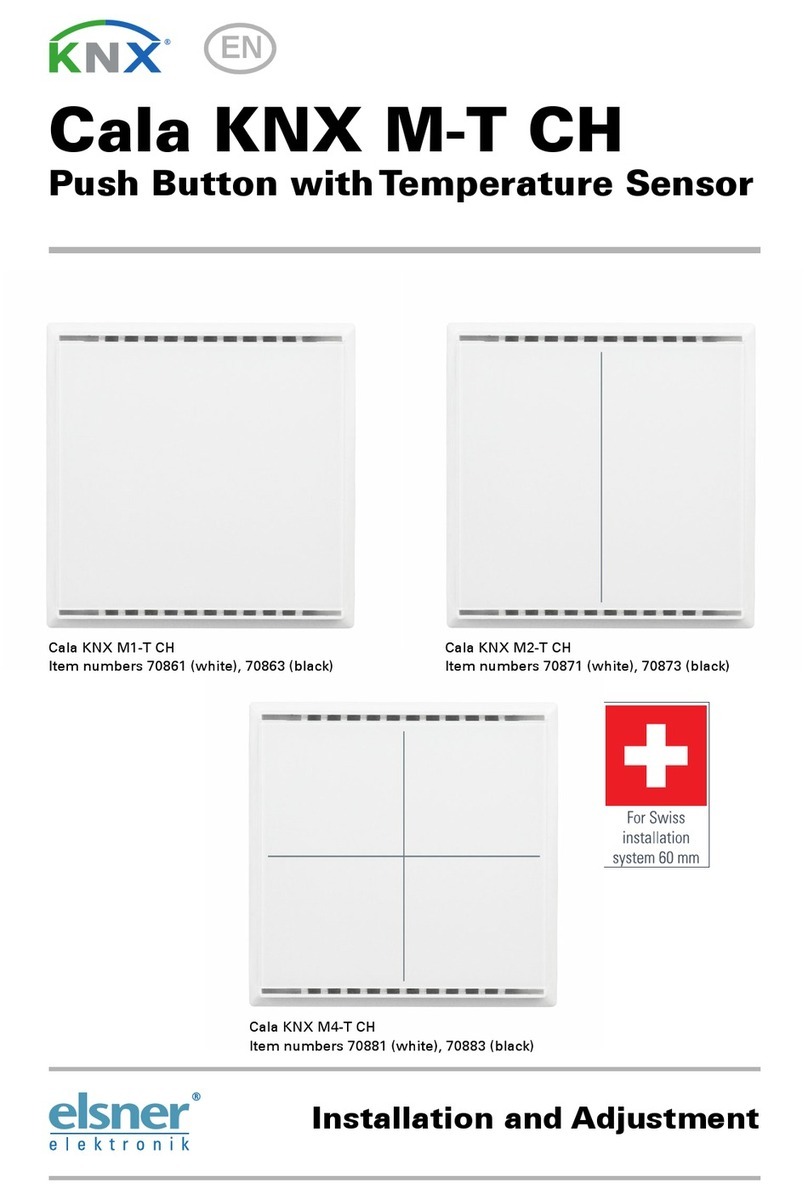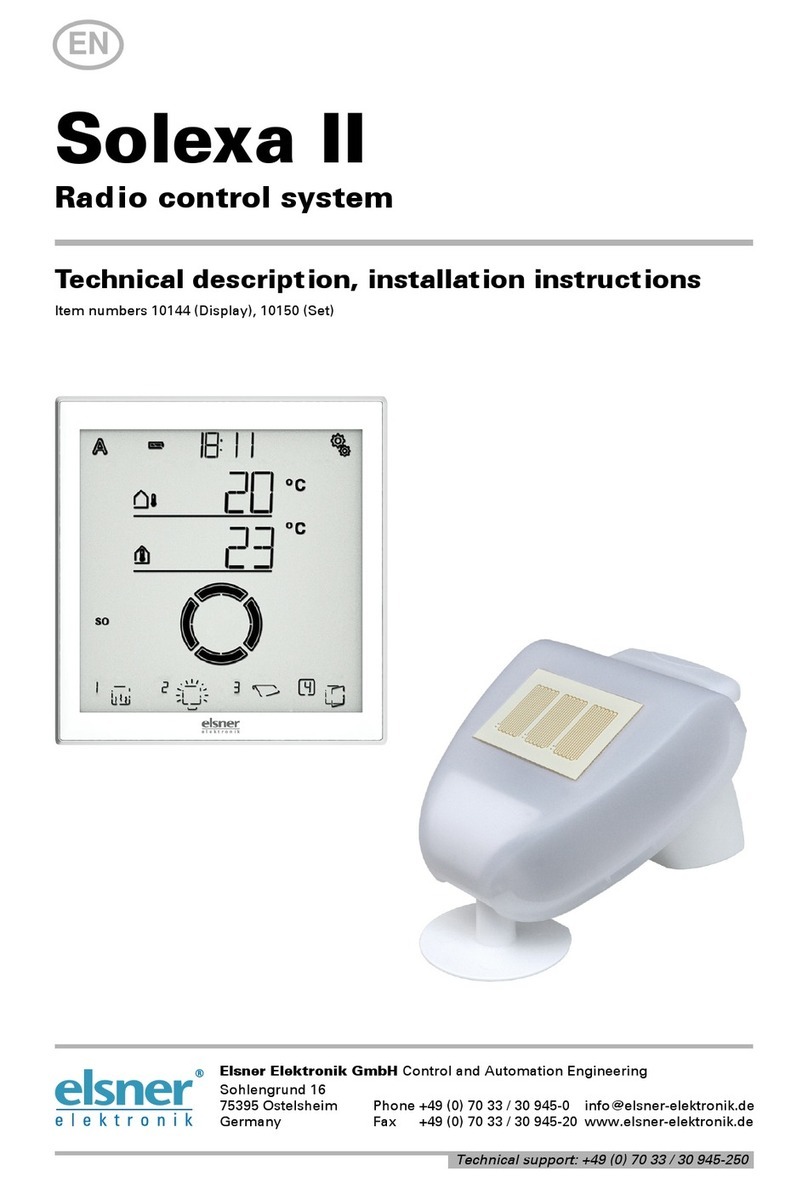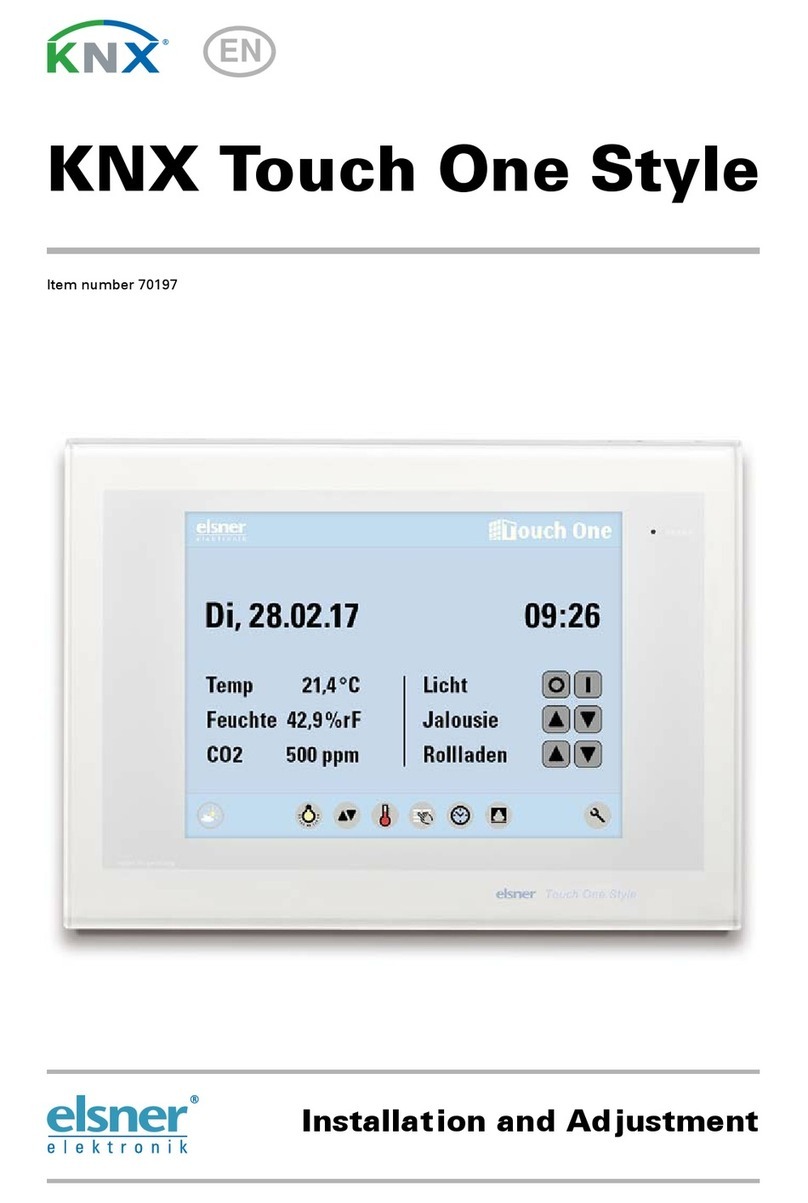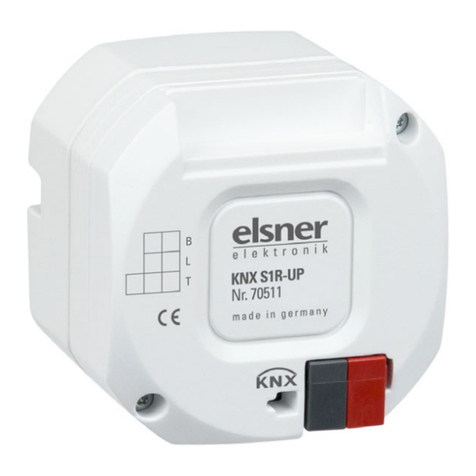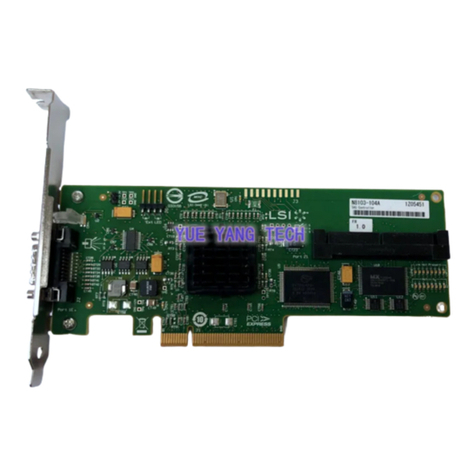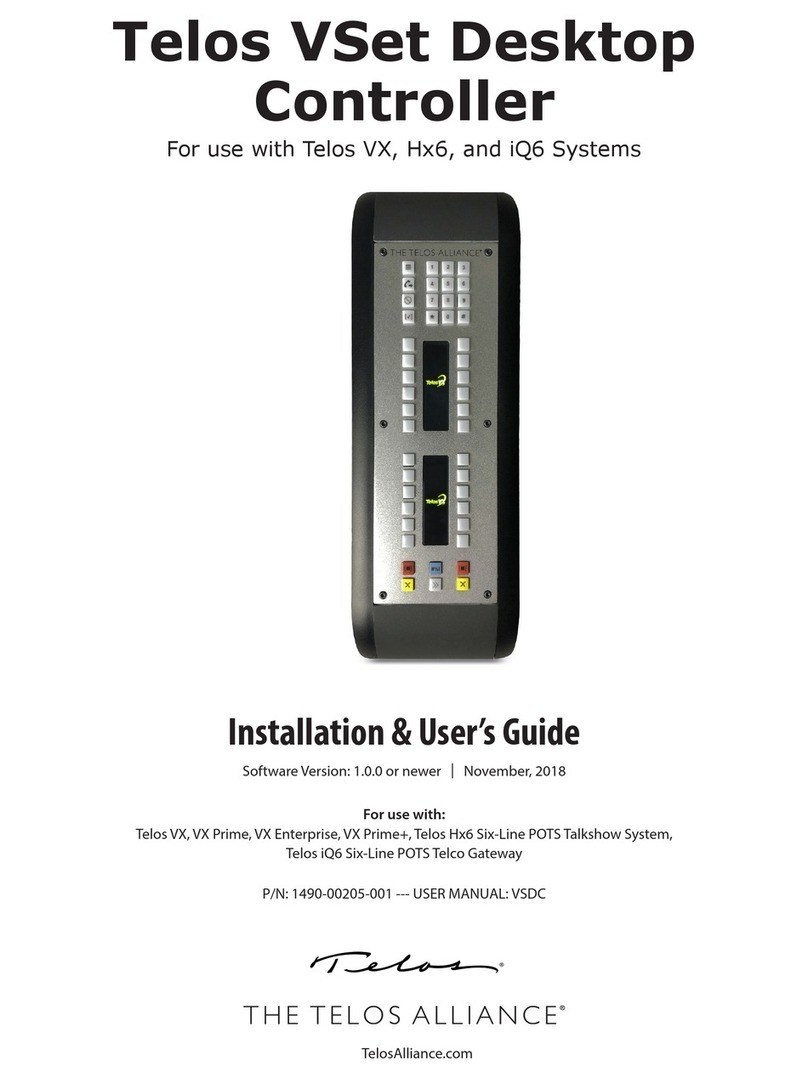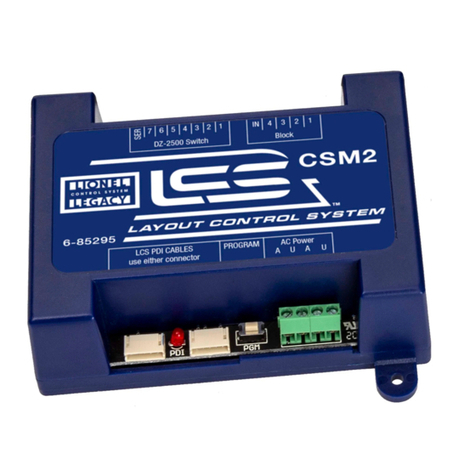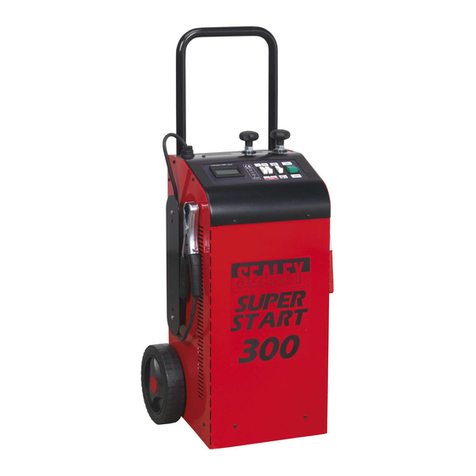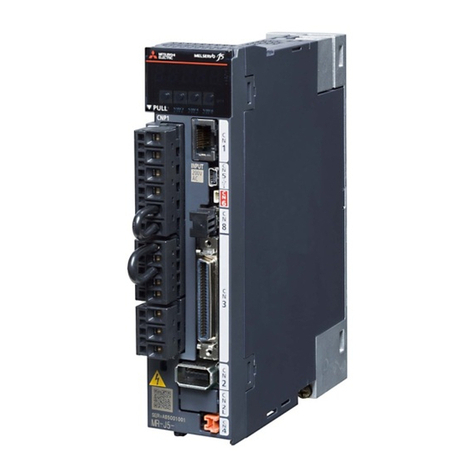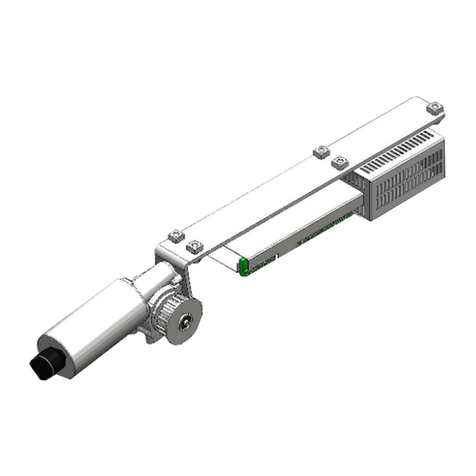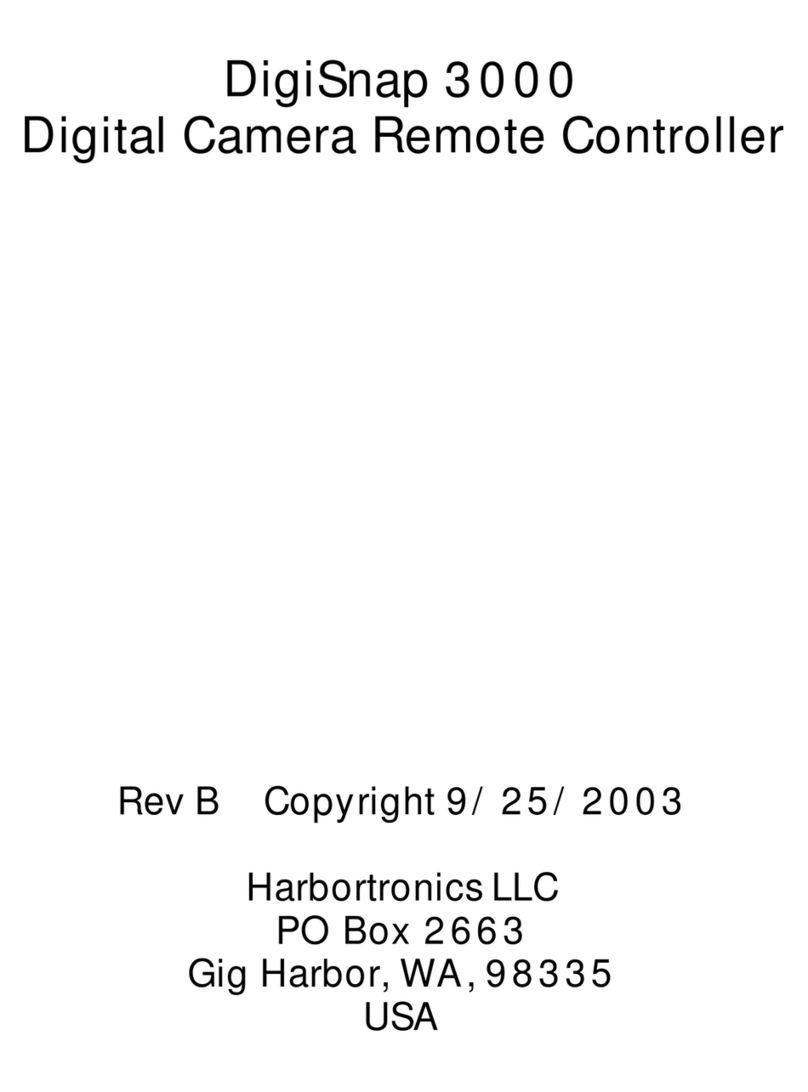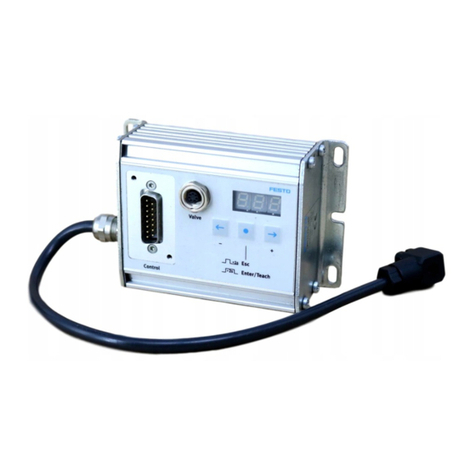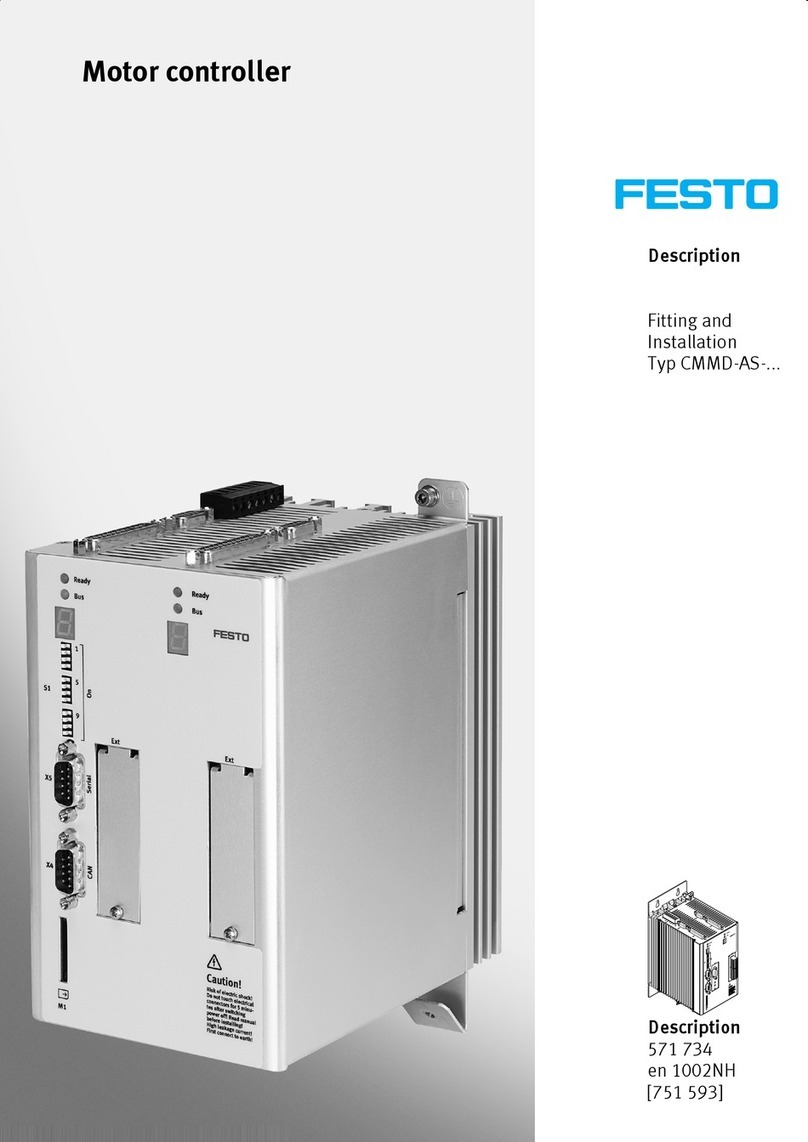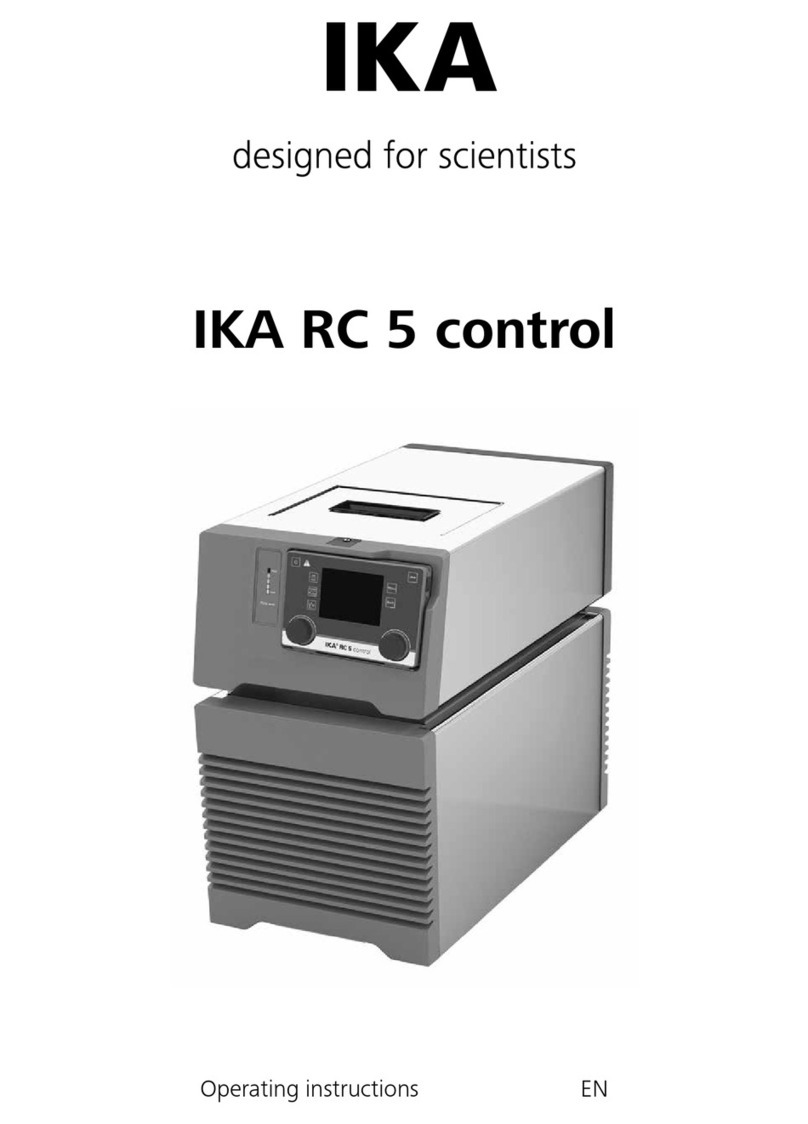Elsner KNX eTR 208 Light/Sunblind Guide

EN
Installation and Adjustment
KNX eTR 208
Light/Sunblind
Button for Temperature,
Light and Solar Protection
Item number 71190


1 Contents
Elsner Elektronik GmbH • Sohlengrund 16 • 75395 Ostelsheim • Germany
KNX eTR 208 Light/Sunblind push button • from application 1.0
Version: 16.12.2020 • Technical changes and errors excepted.
1. Description ........................................................................................... 3
1.0.1. Area function ................................................................................................. 3
1.0.2. Scope of delivery .......................................................................................... 4
1.1. Technical specifications ........................................................................................... 4
1.1.1. Accuracy of the measurement ..................................................................... 5
2. Installation and commissioning ........................................................... 5
2.1. Installation notes ...................................................................................................... 5
2.2. Installation position .................................................................................................. 6
2.3. Composition of the device ....................................................................................... 7
2.4. Mounting ................................................................................................................... 8
3. Notes on mounting and commissioning .............................................. 9
4. Addressing the device .......................................................................... 9
5. Display and operation at the device .................................................. 10
5.1. Adjust room temperature ...................................................................................... 10
6. Maintenance and care ........................................................................ 12
7. Disposal ............................................................................................. 12
8. Transmission protocol ....................................................................... 13
8.1. List of all communication objects ......................................................................... 13
9. Setting the parameters ...................................................................... 17
9.1. Behaviour on power failure/ restoration of power .............................................. 17
9.2. General settings ..................................................................................................... 17
9.3. Temperature measured value ............................................................................... 17
9.4. Temperature threshold values .............................................................................. 18
9.4.1. Threshold value 1, 2 ................................................................................... 18
9.5. Temperature PI controller ...................................................................................... 20
9.5.1. Heating control stage 1/2 ........................................................................... 26
9.5.2. Cooling control stage 1/2 ........................................................................... 28
9.5.3. Fan Coil Control .......................................................................................... 30
9.6. LEDs ......................................................................................................................... 31
9.7. Buttons .................................................................................................................... 32
9.7.1. Light ............................................................................................................. 32
9.7.2. Drive ............................................................................................................. 33
9.7.3. Control modes for drive control ................................................................ 36
9.8. Logic ........................................................................................................................ 38
9.8.1. AND logic outputs 1/2 and OR logic outputs 1/2 ...................................... 38
9.8.2. OR LOGIC connection inputs ..................................................................... 40

2 Clarification of signs
This manual is amended periodically and will be brought into line with new software
releases. The change status (software version and date) can be found in the contents footer.
If you have a device with a later software version, please check
www.elsner-elektronik.de in the menu area "Service" to find out whether a more up-to-
date version of the manual is available.
Clarification of signs used in this manual
Installation, inspection, commissioning and troubleshooting of the device
must only be carried out by a competent electrician.
Safety advice.
Safety advice for working on electrical connections, components,
etc.
DANGER! ... indicates an immediately hazardous situation which will lead to
death or severe injuries if it is not avoided.
WARNING! ... indicates a potentially hazardous situation which may lead to
death or severe injuries if it is not avoided.
CAUTION! ... indicates a potentially hazardous situation which may lead to
trivial or minor injuries if it is not avoided.
ATTENTION! ... indicates a situation which may lead to damage to property if it is
not avoided.
ETS In the ETS tables, the parameter default settings are marked by
underlining.

3 Description
KNX eTR 208 Light/Sunblind push button • Version: 16.12.2020 • Technical changes and errors excepted.
1. Description
The KNX eTR 208 Light/Sunblind push button has touch-sensitive buttons with
which functions can be called up in the KNX building bus system. The glass surface is
printed with areas for setting the temperature, light and solar protection. LEDs are in-
tegrated in these areas and their behaviour can be adjusted.
A temperature sensor is integrated into KNX eTR 208 Light/Sunblind. An external
temperature reading can be received via the bus and processed with its own data to
create a total temperature (mixed value).
The KNX eTR 208 Light/Sunblind has a PI controller for heating and cooling. The
setpoint temperature can be changed using the "+" and "-" touch buttons.
Communication objects can be linked via AND and OR logic gates.
Functions:
•Operating zone for temperature control with 2 areas (warmer, cooler)
•Operating zone for light with 2 areas (switching and dimming)
•Operating zone for blinds, awnings, shutters or windows with 2 areas (up/
down with short/long distinction)
•LEDs can be set. All LEDs Off, all LEDs as ambient lighting, all LEDs
individually controllable
•Area function when touching two or more push buttons. Can be configured
as switch, selector switch, as 8 or 16 bit encoder or for scenario recall
•Temperature measurements. Mixed value from own measured value and
external values (proportion can be set by percentage), output of minimum and
maximum values
•PI-controller for heating (one or two-level) and cooling (one or two-level)
according to temperature. Regulation according to separate setpoints or basic
setpoint temperature
•2 AND and 2 OR logic gates each with 4 inputs. 8 logic inputs (in the form
of communications objects) can be used as inputs for the logic gates. The
output from each gate can be configured optionally as 1-bit or 2 x 8-bit
Configuration is made using the KNX software ETS 5. The product file can be
downloaded from the ETS online catalogue and the Elsner Elektronik website on
www.elsner-elektronik.de in the “Service” menu.
1.0.1. Area function
If the area function in ETS has been activated, another function is available alongside
the regular key functions. This is triggered by touching multiple keys, e.g. if you touch
the sensor with the palm of your hand.
Using the area function
If a key is pressed and another (different) key is touched within 0.2 seconds, the action
set in the ETS is performed for the area operation (See Fig. 1 a) and b)). The keys are
then blocked for 0.5 seconds.

4 Description
KNX eTR 208 Light/Sunblind push button • Version: 16.12.2020 • Technical changes and errors excepted.
Using the normal key function
If a key is pressed and no other key is touched within 0.2 seconds, the normal key
function is enabled/provided for 5 seconds (See Fig. 1 c) and d)). This is extended for 5
seconds with each push of the button.
If the area function in the ETS is disabled, the keys can be used normally at any time.
1.0.2. Scope of delivery
• Room temperature controller with mounting
• 4 screw anchors 4 × 20 mm, 4 flat head screws 3 × 25 mm
1.1. Technical specifications
Housing plastic material, glass
Colours similar to RAL 9003 signal white
Mounting on-wall (directly or with a socket Ø60 mm, resp. cavity
wall socket for hole Ø68 mm)
Degree of protection IP 10
Key function readiness
Key function readiness
Fig. 1
0s 0.2s 5.2s
Key Y
Key X
Key X
Design
FunctionY
Key function readiness
Area function
Examples of normal key functions
0.5 s block
Key X
Design
Area function
KeyY
Design
Function X
a)
b)
c)
d)
Key X
KeyY 0.5 s block
Design
Area function
Area function examples
readiness

5 Installation and commissioning
KNX eTR 208 Light/Sunblind push button • Version: 16.12.2020 • Technical changes and errors excepted.
The product conforms with the provisions of EU guidelines.
1.1.1. Accuracy of the measurement
Measurement variations from permanent sources of interference (see chapter
Installation position) can be corrected in the ETS in order to ensure the specified
accuracy of the sensor (offset).
When measuring temperature, the self-heating of the device is compensated.
2. Installation and commissioning
2.1. Installation notes
Installation, testing, operational start-up and troubleshooting should
only be performed by an electrician.
CAUTION!
Live voltage!
There are unprotected live components inside the device.
• National legal regulations are to be followed.
• Ensure that all lines to be assembled are free of voltage and take
precautions against accidental switching on.
• Do not use the device if it is damaged.
• Take the device or system out of service and secure it against
unintentional use, if it can be assumed, that risk-free operation is
no longer guaranteed.
Dimensions housing approx. 81,5 x 81,5 (W x H, mm),
mounting depth approx. 12 mm
Total weight approx. 70 g
Ambient temperature Operation 0…+55°C, storage -30…+85°C
Ambient air humidity 5...95% RH, avoid bedewing
Operating voltage KNX bus voltage
Bus current max. 25 mA
Data output KNX +/- bus terminals
Group addresses max. 254
Allocations max. 254
Communication objects 98
Temperature measurement
range
0…+55°C
Temperature resolution 0.1°C

6 Installation and commissioning
KNX eTR 208 Light/Sunblind push button • Version: 16.12.2020 • Technical changes and errors excepted.
The device is only to be used for the intended purpose described in this manual. Any
improper modification or failure to follow the operating instructions voids any and all
warranty and guarantee claims.
After unpacking the device, check it immediately for possible mechanical damage. If it
has been damaged in transport, inform the supplier immediately.
The device may only be used as a fixed-site installation; that means only when
assembled and after conclusion of all installation and operational start-up tasks and
only in the surroundings designated for it.
Elsner Elektronik is not liable for any changes in norms and standards which may occur
after publication of these operating instructions.
2.2. Installation position
The KNX eTR 208 Light/Sunblind push button is made for wall mounting. The
device can be mounted directly on plaster or on a socket (Ø 60 mm).
May be installed and operated in dry interior rooms only.
Avoid condensation.
When selecting an installation location, please ensure that the measurement results
are affected as little as possible by external influences. Possible sources of interference
include:
• Direct sunlight
• Drafts from windows and doors
• Draft from ducts which lead from other rooms or from the outside to the
junction box in which the sensor is mounted
• Warming or cooling of the building structure on which the sensor is mounted,
e.g. due to sunlight, heating or cold water pipes
• Connection lines and ducts which lead from warmer or colder areas to the
sensor
Measurement variations from permanent sources of interference can be corrected in
the ETS in order to ensure the specified accuracy of the sensor (offset).

7 Installation and commissioning
KNX eTR 208 Light/Sunblind push button • Version: 16.12.2020 • Technical changes and errors excepted.
2.3. Composition of the device
1
2
3
Fig. 2
Front view
1 „Temperature“ area with 2 touch sur-
faces and temperature display
2 „Light“ area with 2 touch surfaces
3 „Sun protection/drive“ area with 2
touch surfaces
3
4
5
Fig. 3
Back view with mounting
3/4 Screw holes for different sockets. Fastening
with 2 screws is sufficient. For wall mounting,
use a fixing material suitable for the ground!
5 KNX bus terminal +/- for connection when
mounted on a socket
6 Spring-loaded terminals KNX bus for moun-
ting directly on the wall
3
33
44
4
6

8 Installation and commissioning
KNX eTR 208 Light/Sunblind push button • Version: 16.12.2020 • Technical changes and errors excepted.
2.4. Mounting
Prepare the device
Remove the front panel from the mounting. Release the lock by moving the front panel
a few millimetres upwards. The two parts can then be easily separated (Fig. 5).
Screw the mounting onto the wall or socket. The connecting wires (bus line +/-) are led
through the opening in the mounting.
Fig. 4
Back view without mounting
5 KNX bus terminal +/- for connection when
mounted on a socket
6 Spring-loaded terminals KNX bus for moun-
ting directly on the wall
7 Programming LED
8 Programming button (recessed) for teaching
device
9 Temperature sensor
PRG key is accessible from below/outside when
the device is mounted (see chapter Addressing
the device).
5 6897
Fig. 5 Locking of front panel and mounting

9 Notes on mounting and commissioning
KNX eTR 208 Light/Sunblind push button • Version: 16.12.2020 • Technical changes and errors excepted.
Installation directly on the wall
The wires are pushed into the connection openings.
Installation on a socket
To avoid falsifying the temperature value, use a wind-proof socket and also seal the in-
let pipes against draughts.
Finish mounting
Snap the front panel into place on the mounting (see Fig. 5): Place it slightly above the
centre position, hook it in and slide it downwards.
3. Notes on mounting and commissioning
Never expose the device to water (e.g. rain) or dust. This can damage the electronics.
You must not exceed a relative humidity of 95%. Avoid condensation.
After the bus voltage has been applied, the device will enter an initialisation phase
lasting a few seconds. During this phase no information can be received or sent via the
bus.
4. Addressing the device
The device is delivered ex works with the bus address 15.15.255. You program a differ-
ent address in the ETS by overwriting the address 15.15.255 or teach the device using
the programming button.
The programming button is located at the bottom outer side of the front panel of the
device and is recessed. Use a thin object to reach the button, e. g. a 1.5 mm² wire.
When the button is pressed, the temperature display on the front flashes.
Remove the red-black KNX bus terminal, it is not
required.
Connect the bus +/- connecting wires to the spring-
loaded terminals on the front panel.
Fig. 6 Spring-loaded terminals
To pull it out, press the spring down, e.g. with a
screwdriver.
If there is a cavity behind the device, e.g. when
using a socket, you can use the red/black KNX bus
terminal for connection.

10 Display and operation at the device
KNX eTR 208 Light/Sunblind push button • Version: 16.12.2020 • Technical changes and errors excepted.
5. Display and operation at the device
5.1. Adjust room temperature
Depending on the setting of the "Display mode" parameter in the device application,
the KNX eTR 208 Light/Sunblind push button displays the current room
temperature value (or mixed value), the target value or the shift in relation to the basic
setpoint. The display can be dimmed and switched off via the bus so that no value is
displayed.
Option A: Display of actual temperature (room temperature)
The current room temperature is displayed. It is not possible to change the room
temperature manually using the +/- buttons.
Option B: Display of target temperature or basic setpoint shift
Depending on the setting, the current target value or the shift relative to the base
setpoint is displayed. The temperature can be changed by touching the +/- buttons.
Target value display (absolute value):
PRG
Fig. 7
View from bottom
Temperature sensor
Tap +:
Increase room temperature
(target temperature is
increased)
Tap -:
Lower room temperature
(target temperature is lowered)

11 Display and operation at the device
KNX eTR 208 Light/Sunblind push button • Version: 16.12.2020 • Technical changes and errors excepted.
Display of the basic setpoint shift (change compared to the basic setpoint of the
control):
Option C: Display of actual temperature and target temperature/basic
setpoint shift
During normal operation, the current room temperature is displayed. By touching the
buttons, the display jumps to the target temperature or to the basic setpoint shift,
depending on the presetting. Changes with + or - are visible. The display returns to the
room temperature if no button is touched for 7 seconds.
Touch the + or - button briefly: The current target temperature (or the basic setpoint
shift) is displayed.
Tap +: Increase room temperature
(target temperature/basic setpoint shift is increased).
Tap -: Lower room temperature
(target temperature/basic setpoint shift is lowered).
Tap +:
Increase room temperature
(Basic setpoint shift direction
PLUS)
Tap -:
Lower room temperature
(Basic setpoint shift direction
MINUS)
or

12 Maintenance and care
KNX eTR 208 Light/Sunblind push button • Version: 16.12.2020 • Technical changes and errors excepted.
General:
The step size for the change and the possible setting range are defined in the device
application (ETS). There you can also define whether the manually changed values are
retained after a mode change (e.g. Eco mode overnight) or reset to the stored values.
The button functions can be disabled in the ETS or locked due to operating mode with
priority 1.
6. Maintenance and care
Fingerprints on the glass panel are best removed with a cloth moistened with water or
a microfiber cloth. Do not use an abrasive cleaning agent or aggressive cleansing
agents.
7. Disposal
After use, the device must be disposed of or recycled in accordance with the legal
regulations. Do not dispose of it with the household waste!

13 Transmission protocol
KNX eTR 208 Light/Sunblind push button • Version: 16.12.2020 • Technical changes and errors excepted
8. Transmission protocol
Units:
Temperatures in degrees Celsius
8.1. List of all communication objects
Abbreviations Flags:
C Communication
R Read
WWrite
T Transmit
UUpdate
No Text Function Flags DPT type Size
0 Software version Output R-CT [217.1] DPT_Ver-
sion
2 Bytes
20 Temperature sensor: malfunction Output R-CT [1.1] DPT_Switch 1 Bit
21 Temperature sensor: measured
value external
Input -WCT [9.1] DPT_Val-
ue_Temp
2 Bytes
22 Temperature sensor: measured
value
Output R-CT [9.1] DPT_Val-
ue_Temp
2 Bytes
23 Temperature sensor: measured
value total
Output R-CT [9.1] DPT_Val-
ue_Temp
2 Bytes
24 Temperature sensor: measured
value min./max. query
Input -WC- [1.17] DPT_Trig-
ger
1 Bit
25 Temperature sensor: measured
value minimum
Output R-CT [9.1] DPT_Val-
ue_Temp
2 Bytes
26 Temperature sensor: measured
value maximum
Output R-CT [9.1] DPT_Val-
ue_Temp
2 Bytes
27 Temperature sensor: measured
value min./max. reset
Input -WC- [1.17] DPT_Trig-
ger
1 Bit
30 Temp. thresholdV 1: Absolute
value
Input /
Output
RWCT [9.1] DPT_Val-
ue_Temp
2 Bytes
31 Temp. thresholdV 1: (1:+ | 0:-) Input -WC- [1.1] DPT_Switch 1 Bit
32 Temp. thresholdV 1: Switching
delay from 0 to 1
Input -WC- [7.5] DPT_Time-
PeriodSec
2 Bytes
33 Temp. thresholdV 1: Switching
delay from 1 to 0
Input -WC- [7.5] DPT_Time-
PeriodSec
2 Bytes
34 Temp. thresholdV 1: Switching
output
Output R-CT [1.1] DPT_Switch 1 Bit
35 Temp. thresholdV 1: Switching
output block
Input -WC- [1.1] DPT_Switch 1 Bit
36 Temp. thresholdV 2: Absolute
value
Input /
Output
RWCT [9.1] DPT_Val-
ue_Temp
2 Bytes

14 Transmission protocol
KNX eTR 208 Light/Sunblind push button • Version: 16.12.2020 • Technical changes and errors excepted
37 Temp. thresholdV 2: (1:+ | 0:-) Input -WC- [1.1] DPT_Switch 1 Bit
38 Temp. thresholdV 2: Switching
delay from 0 to 1
Input -WC- [7.5] DPT_Time-
PeriodSec
2 Bytes
39 Temp. thresholdV 2: Switching
delay from 1 to 0
Input -WC- [7.5] DPT_Time-
PeriodSec
2 Bytes
40 Temp. thresholdV 2: Switching
output
Output R-CT [1.1] DPT_Switch 1 Bit
41 Temp. thresholdV 2: Switching
output block
Input -WC- [1.1] DPT_Switch 1 Bit
50 Temp.control: HVAC mode (prior-
ity 1)
Input /
Output
RWCT depending on
setting
1 Byte
51 Temp.control: HVAC mode (prior-
ity 2)
Input /
Output
RWCT depending on
setting
1 Byte
52 Temp.control: Mode frost/heat
protection activt.
Input RWCT [1.1] DPT_Switch 1 Bit
53 Temp.control: Block (1 = Blocking) Input -WC- [1.1] DPT_Switch 1 Bit
54 Temp.control: Current setpoint Output R-CT [9.1] DPT_Val-
ue_Temp
2 Bytes
55 Temp.control: Switch. (0: Heating |
1: Cooling)
Input -WC- [1.1] DPT_Switch 1 Bit
56 Temp.control: Setpoint Comfort
heating
Input /
Output
RWCT [9.1] DPT_Val-
ue_Temp
2 Bytes
57 Temp.control: Setpoint Comfort
heat.(1:+ | 0:-)
Input -WC- [1.1] DPT_Switch 1 Bit
58 Temp.control: Setpoint Comfort
cooling
Input /
Output
RWCT [9.1] DPT_Val-
ue_Temp
2 Bytes
59 Temp.control: Setpoint Comfort
cool.(1:+ | 0:-)
Input -WC- [1.1] DPT_Switch 1 Bit
60 Temp.control: Basic 16-bit setpoint
shift
Input -WC- [9.1] DPT_Val-
ue_Temp
2 Bytes
61 Temp.control: Setpoint Standby
heating
Input /
Output
RWCT [9.1] DPT_Val-
ue_Temp
2 Bytes
62 Temp.control: Setpoint Standby
heat.(1:+ | 0:-)
Input -WC- [1.1] DPT_Switch 1 Bit
63 Temp.control: Setpoint Standby
cooling
Input /
Output
RWCT [9.1] DPT_Val-
ue_Temp
2 Bytes
64 Temp.control: Setpoint Standby
cool. (1:+ | 0:-)
Input -WC- [1.1] DPT_Switch 1 Bit
65 Temp.control: Setpoint Eco heat-
ing
Input /
Output
RWCT [9.1] DPT_Val-
ue_Temp
2 Bytes
66 Temp.control: Setpoint Eco heat-
ing (1:+ | 0:-)
Input -WC- [1.1] DPT_Switch 1 Bit
67 Temp.control: Setpoint Eco cool-
ing
Input /
Output
RWCT [9.1] DPT_Val-
ue_Temp
2 Bytes
No Text Function Flags DPT type Size

15 Transmission protocol
KNX eTR 208 Light/Sunblind push button • Version: 16.12.2020 • Technical changes and errors excepted
68 Temp.control: Setpoint Eco cool-
ing (1:+ | 0:-)
Input -WC- [1.1] DPT_Switch 1 Bit
69 Temp.control: Control variable
heating (level 1)
Output R-CT [5.1] DPT_Scal-
ing
1 Byte
70 Temp.control: Control variable
heating (level 2)
Output R-CT [5.1] DPT_Scal-
ing
1 Byte
71 Temp.control: Control variable
cooling (level 1)
Output R-CT [5.1] DPT_Scal-
ing
1 Byte
72 Temp.control: Control variable
cooling (level 2)
Output R-CT [5.1] DPT_Scal-
ing
1 Byte
73 Temperature control: Variable for
4/6-way valve
Output R-CT [5.1] DPT_Scal-
ing
1 Byte
74 Temp.control: Status Heat. level 1
(1=ON|0=OFF)
Output R-CT [1.1] DPT_Switch 1 Bit
75 Temp.control: Status Heat. level 2
(1=ON|0=OFF)
Output R-CT [1.1] DPT_Switch 1 Bit
76 Temp.control: Status Cool. level 1
(1=ON|0=OFF)
Output R-CT [1.1] DPT_Switch 1 Bit
77 Temp.control: Status Cool. level 2
(1=ON|0=OFF)
Output R-CT [1.1] DPT_Switch 1 Bit
78 Temp.control: Comfort extension
status
Input /
Output
RWCT [1.1] DPT_Switch 1 Bit
79 Temp.control: Comfort Extension
time
Input RWCT [7.5] DPT_Time-
PeriodSec
2 Bytes
80 Temp. Controller: Fan coil levels 0
to 3
Output R-CT [5.1] DPT_Scal-
ing
1 Byte
81 Temp. Controller: Fan coil level 1 Output R-CT [1.1] DPT_Switch 1 Bit
82 Temp. Controller: Fan coil level 2 Output R-CT [1.1] DPT_Switch 1 Bit
83 Temp. Controller: Fan coil level 3 Output R-CT [1.1] DPT_Switch 1 Bit
84 Temp. Controller: Fan coil auto=1
manual=0
Input /
Output
RWCT [1.1] DPT_Switch 1 Bit
86 All LEDs On/Off Input -WC- [1.1] DPT_Switch 1 Bit
87 All LEDs Brightness Input -WC- [5.1] DPT_Scal-
ing
1 Byte
88 LEDs Temperature display On/Off Input -WC- [1.1] DPT_Switch 1 Bit
89 LEDs Temperature display Block Input -WC- [1.1] DPT_Switch 1 Bit
90 LED 1 on/off Input -WC- [1.1] DPT_Switch 1 Bit
91 LED 1 Block Input -WC- [1.1] DPT_Switch 1 Bit
92 LED 2 on/off Input -WC- [1.1] DPT_Switch 1 Bit
93 LED 2 Block Input -WC- [1.1] DPT_Switch 1 Bit
94 LED 3 on/off Input -WC- [1.1] DPT_Switch 1 Bit
95 LED 3 Block Input -WC- [1.1] DPT_Switch 1 Bit
96 LED 4 on/off Input -WC- [1.1] DPT_Switch 1 Bit
No Text Function Flags DPT type Size

16 Transmission protocol
KNX eTR 208 Light/Sunblind push button • Version: 16.12.2020 • Technical changes and errors excepted
97 LED 4 Block Input -WC- [1.1] DPT_Switch 1 Bit
99 Area operation on/off Input -WC- [1.1] DPT_Switch 1 Bit
100 Area operation Output: Switch Output R-CT depending on
setting
2 Bytes
101 Light switching Output R-CT [1.1] DPT_Switch 1 Bit
102 Light dimming Output R-CT [3.7] DPT_Con-
trol_Dimming
4 Bit
103 Drive Long-term Output R-CT [1.8] DPT_Up-
Down
1 Bit
104 Drive Short-term Output R-CT [1.8] DPT_Start 1 Bit
107 Logic input 1 Input -WC- [1.2] DPT_Bool 1 Bit
108 Logic input 2 Input -WC- [1.2] DPT_Bool 1 Bit
109 Logic input 3 Input -WC- [1.2] DPT_Bool 1 Bit
110 Logic input 4 Input -WC- [1.2] DPT_Bool 1 Bit
111 Logic input 5 Input -WC- [1.2] DPT_Bool 1 Bit
112 Logic input 6 Input -WC- [1.2] DPT_Bool 1 Bit
113 Logic input 7 Input -WC- [1.2] DPT_Bool 1 Bit
114 Logic input 8 Input -WC- [1.2] DPT_Bool 1 Bit
117 AND logic 1: 1 bit switching output Output R-CT [1.2] DPT_Bool 1 Bit
118 AND logic 1: 8 bit output A Output R-CT depending on
setting
1 Byte
119 AND logic 1: 8 bit output B Output R-CT depending on
setting
1 Byte
120 AND logic 1: Block Input -WC- [1.1] DPT_Switch 1 Bit
121 AND logic 2: 1 bit switching output Output R-CT [1.2] DPT_Bool 1 Bit
122 AND logic 2: 8 bit output A Output R-CT depending on
setting
1 Byte
123 AND logic 2: 8 bit output B Output R-CT depending on
setting
1 Byte
124 AND logic 2: Block Input -WC- [1.1] DPT_Switch 1 Bit
125 OR logic 1: 1 bit switching output Output R-CT [1.2] DPT_Bool 1 Bit
126 OR logic 1: 8 bit output A Output R-CT depending on
setting
1 Byte
127 OR logic 1: 8 bit output B Output R-CT depending on
setting
1 Byte
128 OR logic 1: Block Input -WC- [1.1] DPT_Switch 1 Bit
129 OR logic 2: 1 bit switching output Output R-CT [1.2] DPT_Bool 1 Bit
130 OR logic 2: 8 bit output A Output R-CT depending on
setting
1 Byte
131 OR logic 2: 8 bit output B Output R-CT depending on
setting
1 Byte
132 OR logic 2: Block Input -WC- [1.1] DPT_Switch 1 Bit
No Text Function Flags DPT type Size

17 Setting the parameters
KNX eTR 208 Light/Sunblind push button • Version: 16.12.2020 • Technical changes and errors excepted
9. Setting the parameters
9.1. Behaviour on power failure/ restoration of
power
Behaviour following a failure of the bus power supply:
The device sends nothing.
Behaviour on bus restoration of power and following programming or reset:
The device sends all outputs according to their send behaviour set in the parameters
with the delays established in the "General settings" parameter block.
9.2. General settings
Set the basic properties of the data transmission.
9.3. Temperature measured value
Select, whether a malfunction object is to be sent if the sensor is faulty.
Use Offsets to adjust the readings to be sent.
The unit can calculate a mixed value from its own reading and an external value. Set
the mixed value calculation if desired. If an external portion is used, all of the following
settings (threshold values, etc.) are related to the overall reading.
Transmission delay after reset/bus restora-
tion
5s• ... • 300 s
Maximum message rate • 1 message per second
• ...
• 10 messages per second
• ...
• 50 messages per second
Use malfunction object No • Yes
Offset in 0.1°C -50…50; 0
Use external measured value No • Yes
Ext. Reading proportion of the total reading 5% • 10% • ... • 50% • ... • 100%
Sending pattern for internal and total
measured value
• never
• periodically
• on change
• on change and periodically

18 Setting the parameters
KNX eTR 208 Light/Sunblind push button • Version: 16.12.2020 • Technical changes and errors excepted
The minimum and maximum readings can be saved and sent to the bus. Use the
"Reset temperature min/max. value" objects to reset the values to the current readings.
The values are not retained after a reset.
9.4. Temperature threshold values
Activate the required temperature threshold values. The menus for the further setting
of the threshold values are then displayed.
9.4.1. Threshold value 1, 2
Threshold value
Decide in which cases threshold values and delay times received are to be kept per
object. The parameter is only taken into consideration if the setting by object is activat-
ed further down. Please note that the setting "After power restoration and program-
ming" should not be used for the initial start-up, as the factory settings are always used
until the first call (setting via objects is ignored).
Set the threshold values directly in the application program using parameters, or de-
fine them via the bus using a communication object.
Threshold value setpoint using parameter:
Set the threshold values and hysteresis directly.
Threshold value setpoint using a communication object:
Beforehand, enter how the threshold value will be received from the bus. Basically, a
new value can be received, or simply a command to increase or decrease.
During initial commissioning, a threshold value must be defined which will be valid un-
til the first call with a new threshold value. For units which have already been taken into
service, the last communicated threshold value can be used. Basically, a temperature
range is given in which the threshold value can be changed (object value limit).
At and above change of
(if sent on change)
0.1°C • 0.2°C • 0.5°C • ... • 5.0°C
Send cycle
(if sent periodically)
5 s • 10 s • ... • 2 h
Use minimum and maximum value No • Yes
Use threshold value 1 / 2 Yes • No
Threshold value setpoint using Parameter • Communication objects
Threshold in 0.1°C -300… 800; 200
Table of contents
Other Elsner Controllers manuals

Elsner
Elsner WS1000 Color Owner's manual

Elsner
Elsner KNX eTR Sunblind Series Guide

Elsner
Elsner Solexa 230V Guide

Elsner
Elsner WS1000 Color User instructions
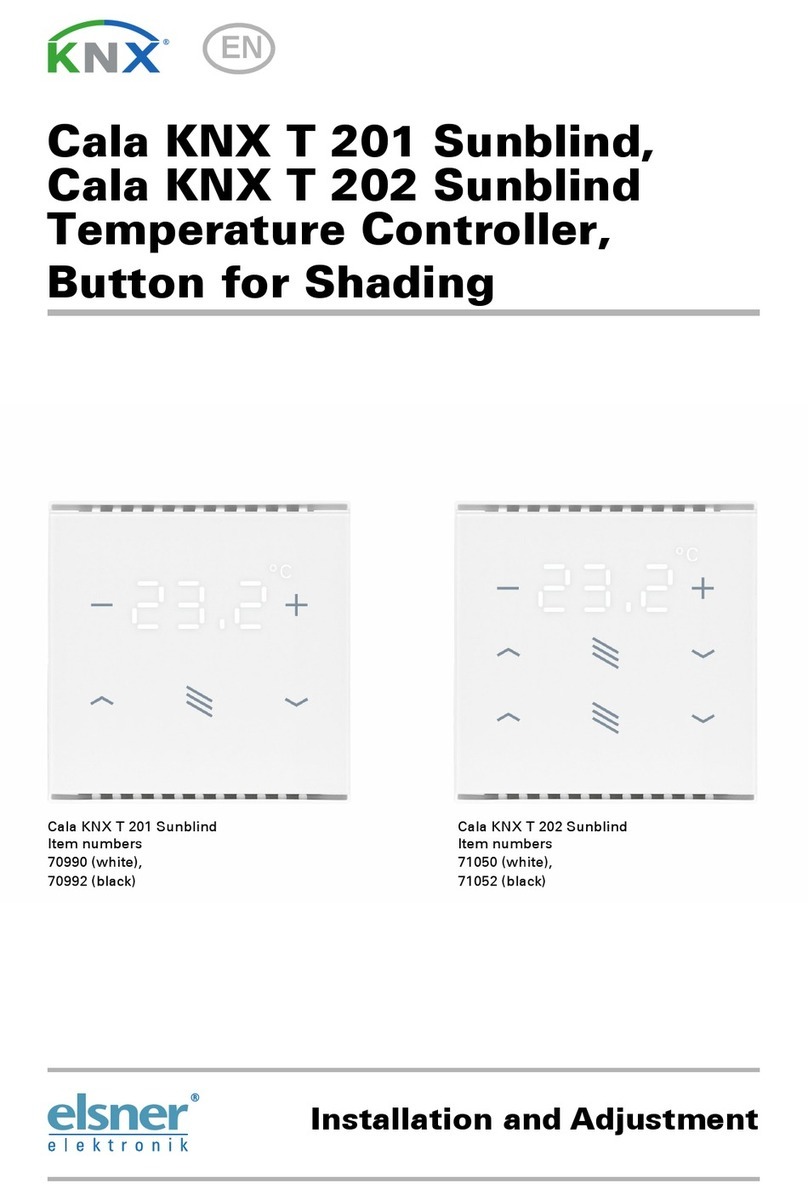
Elsner
Elsner Cala KNX T 201 Sunblind Guide
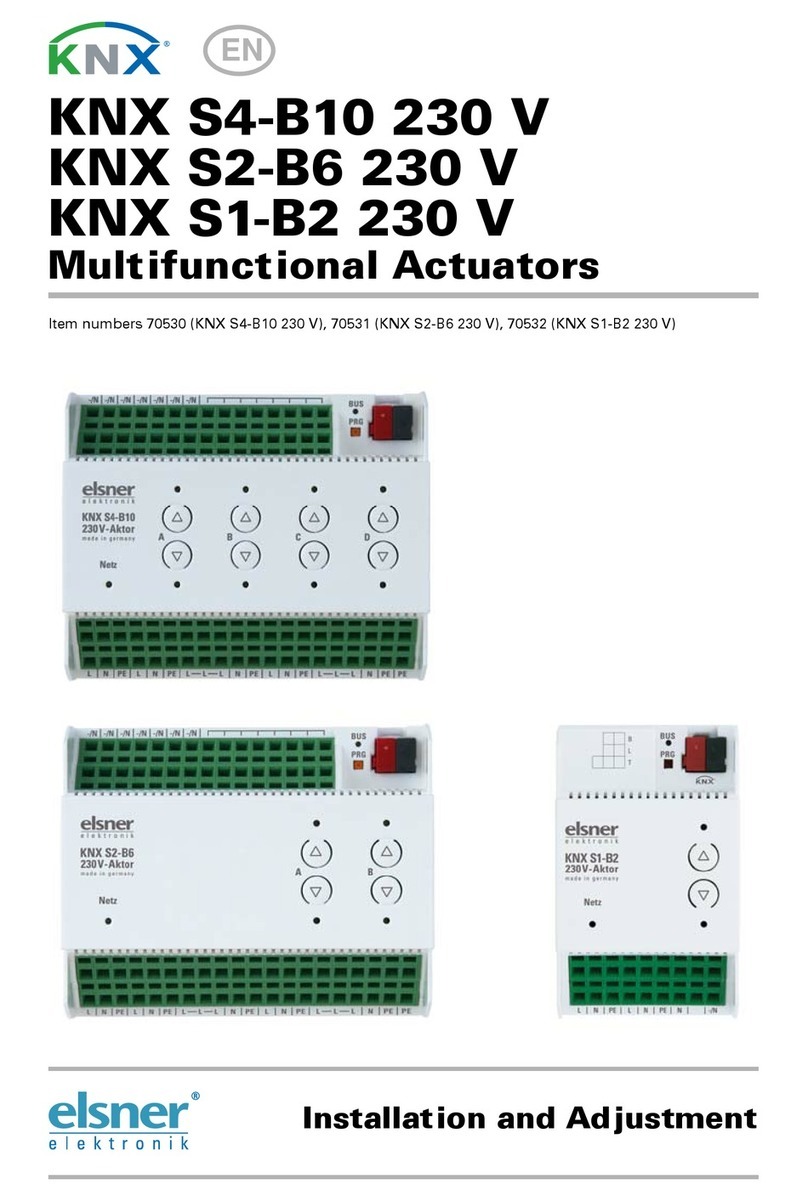
Elsner
Elsner KNX S4-B10 230 V Guide

Elsner
Elsner KNX eTR Sunblind User manual
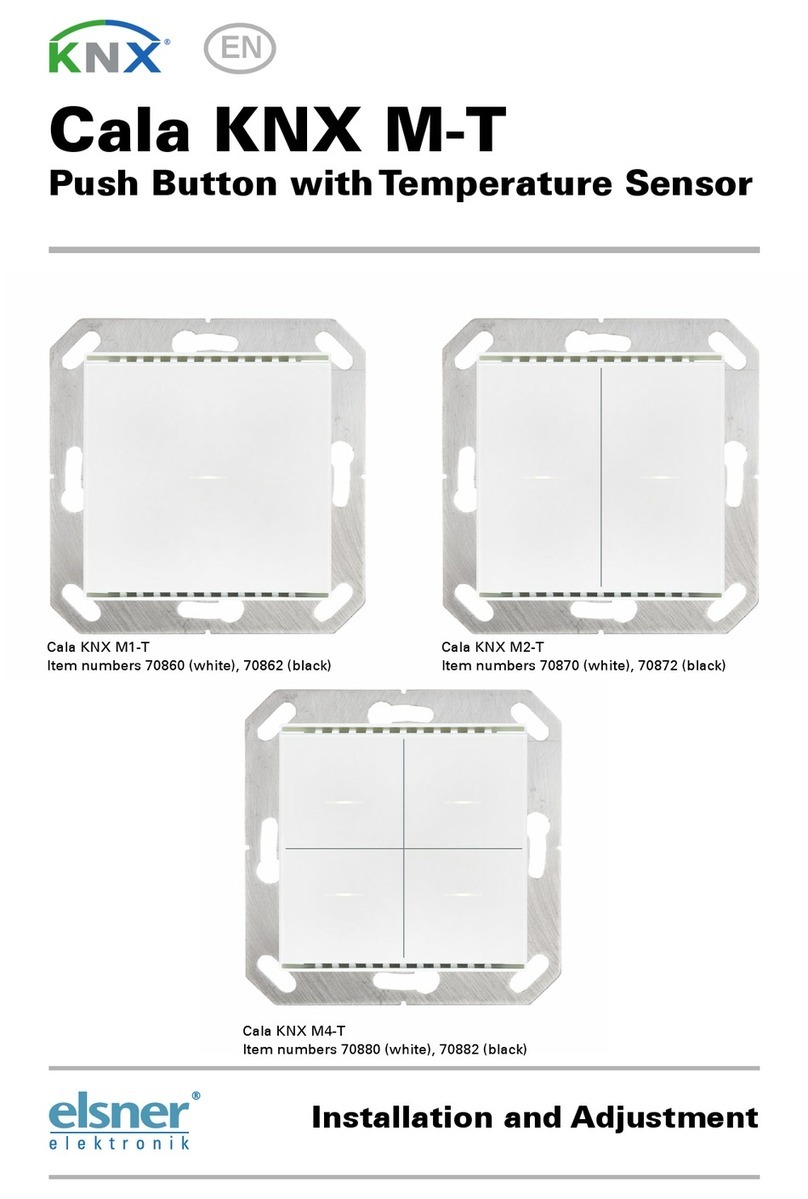
Elsner
Elsner Cala KNX M-T Series Guide

Elsner
Elsner KNX S1E-UP 230V Guide
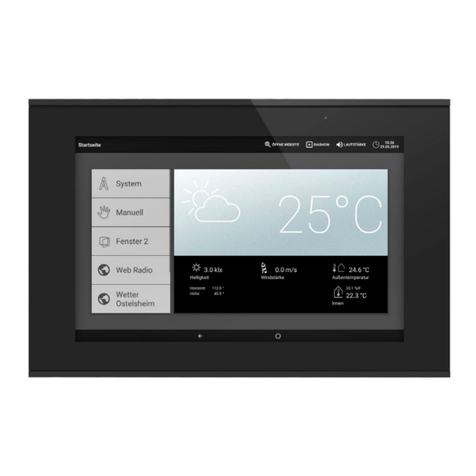
Elsner
Elsner 71200 User manual
Popular Controllers manuals by other brands
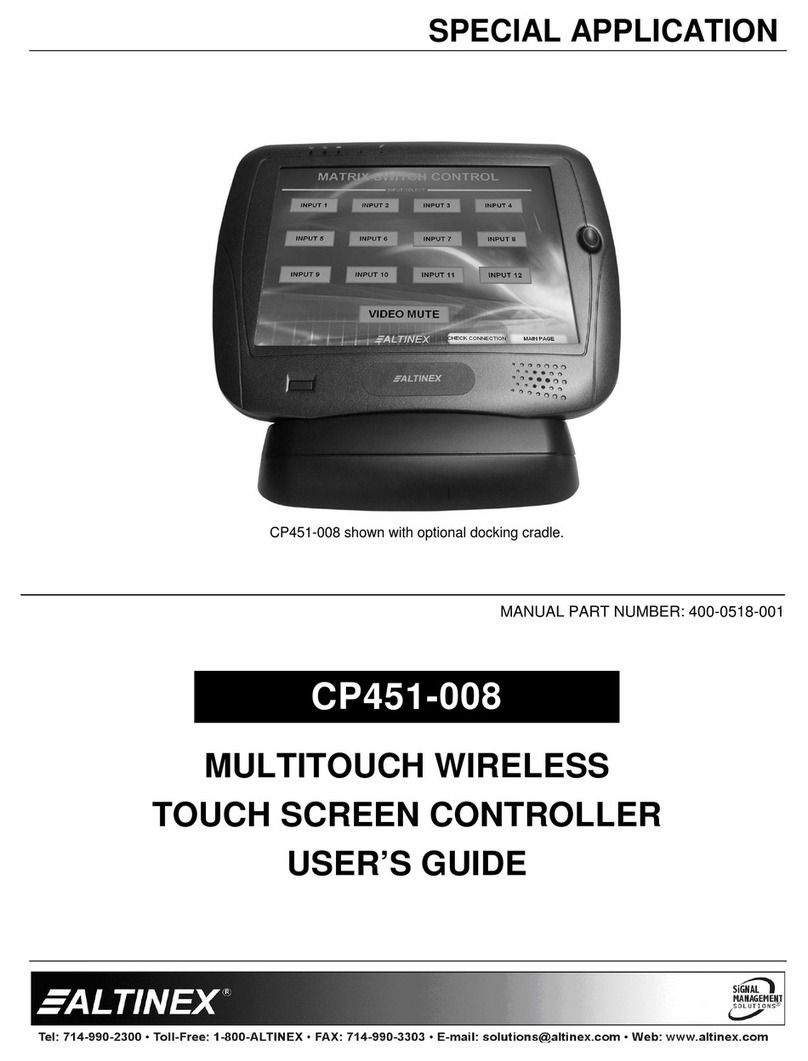
Altinex
Altinex Wireless Touchscreen Controller CP451-008 user guide
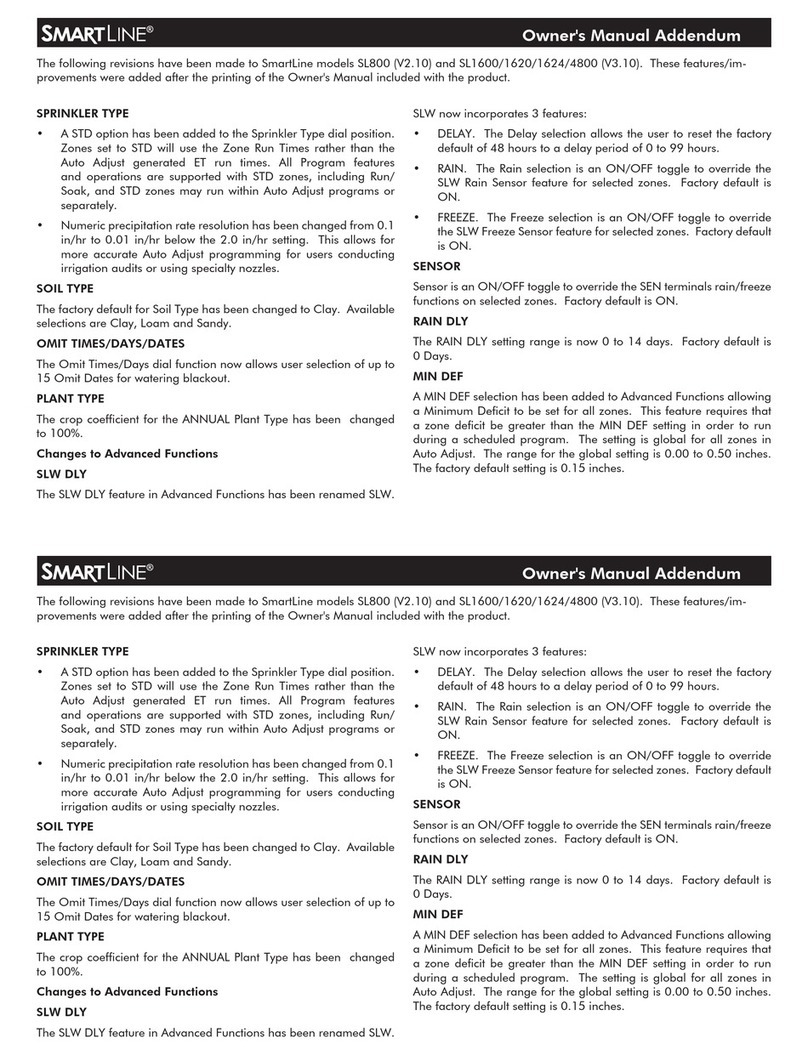
SmartLine
SmartLine SL800 owner's manual
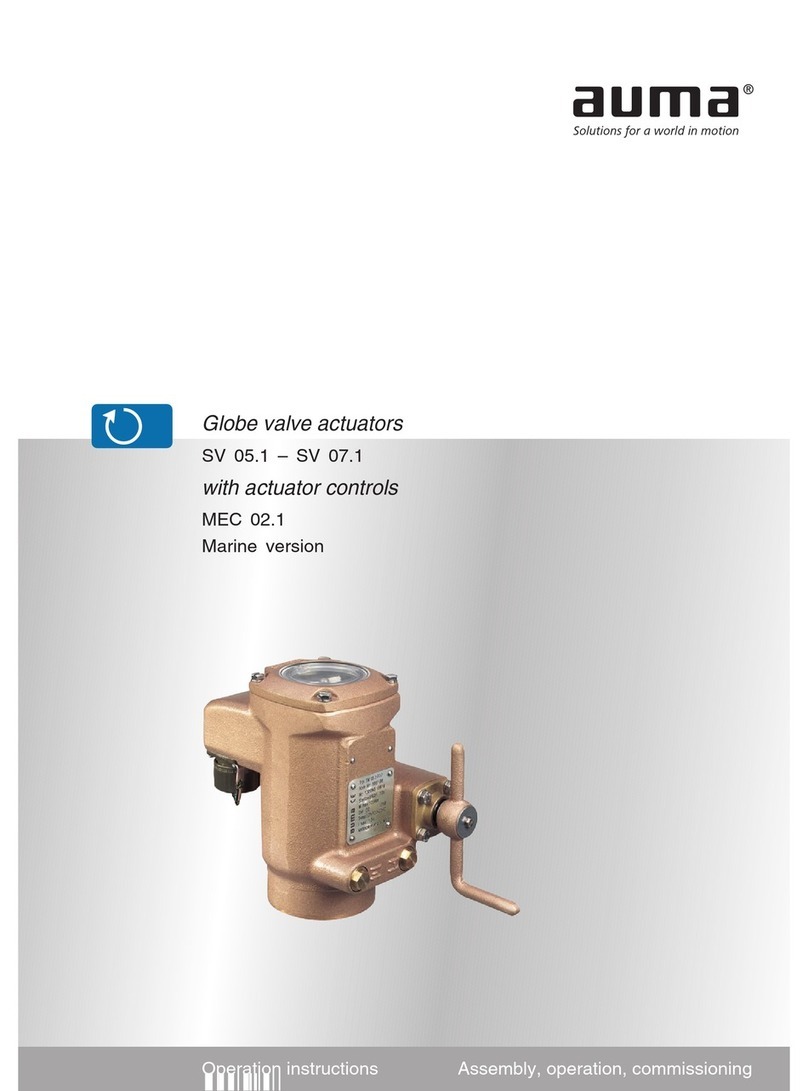
AUMA
AUMA SV 05.1 Operation instructions

Keysight Technologies
Keysight Technologies M9035A Startup guide
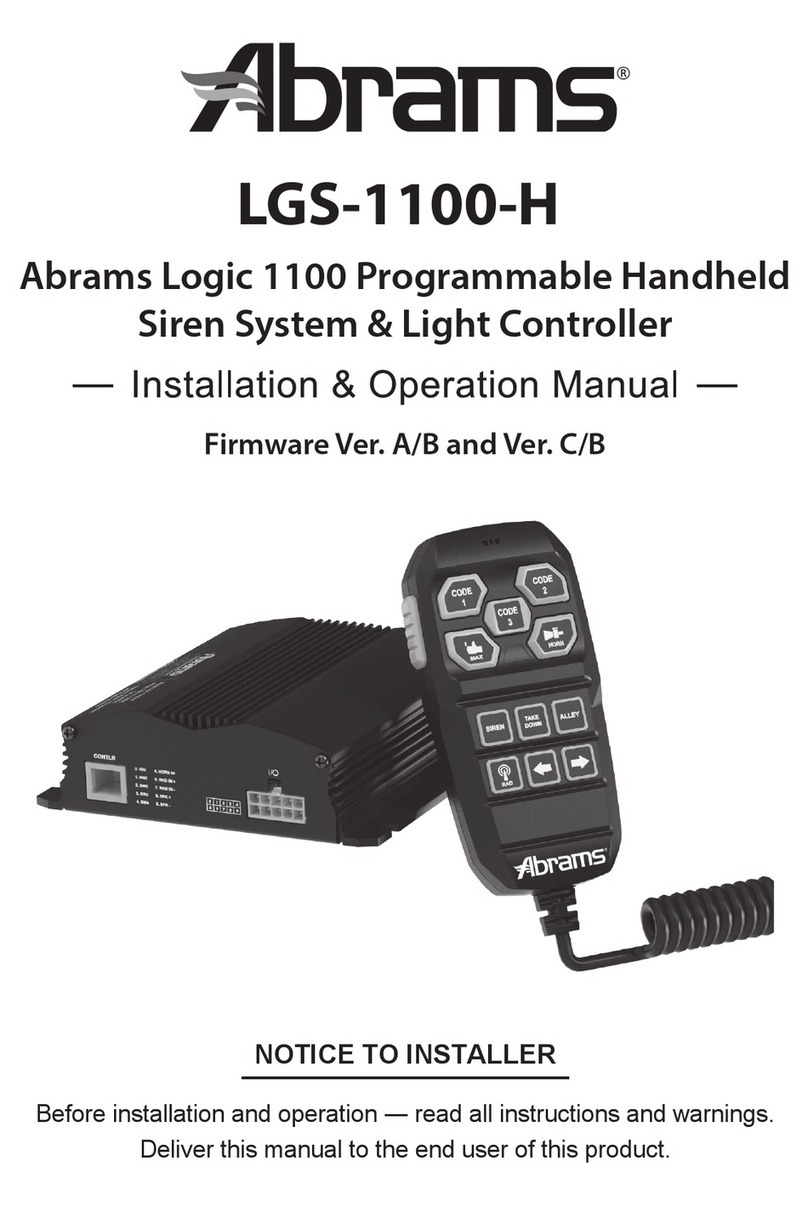
Abrams
Abrams Logic 1100 Installation & operation manual
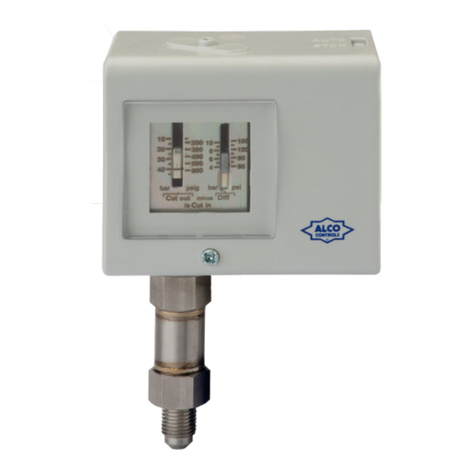
Emerson
Emerson Alco Controls CS1 Series Operating instruction
